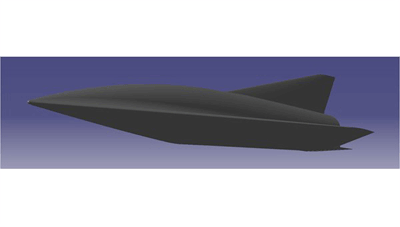Hypersonic “SpaceLiner”: Travel from Germany to Australia in less than 90 minutes
In 50 years, the Hypersonic SpaceLiner will introduce a new type of travel
BY NICOLETTE EMMINO
Don’t let its name fool you, this is not a space mission vehicle, but instead a new application of space technology for point-to-point travels on Earth. Imagine a 20-hour flight from Germany to Australia taking just 90 minutes or a 6-hour flight from New York to California taking just about an hour.

A hypersonic “SpaceLiner.” (Image via DLR)
The “SpaceLiner” project started by the German Aerospace Center (DLR), Germany’s national research center for aeronautics and space, began back in 2005 and is backed by the European Space Agency.
A recent announcement by project coordinator, Martin Sippel, revealed that in just 50 years people will be able to board a hypersonic SpaceLiner and travel around the globe at speeds greater than sound.
DLR aims to develop ultra-fast, 50-passenger transport using no exotic technologies, a fully reusable vehicle, and vertical takeoff, as well as safety and passenger conditions similar to commercial airliners.
Passengers would board the craft horizontally like a traditional airplane, then the SpaceLiner would go into “push-back/push-up,” vertical launch mode. The flight would begin with 7 to 8 minutes of thrust. Once it reaches an altitude of about 50 miles, it would glide to its destination. During the journey, the hypersonic liner will be able achieve speeds of 15,000 mph.
Besides fast speeds and shorter travel time, the SpaceLiner would employ liquid oxygen and hydrogen-based propellants so that only hydrogen and water vapor would remain in the atmosphere, making it a much more environmentally friendly approach to travel.
What’s next
DLR is now working on ground infrastructure, landing pads, and heat build-up experienced by space re-entry vehicles. The agency is reviewing tests of FAST20XX, a European project studying high-speed crafts that can carry people. DLR will also be consulting with NASA and reviewing their results from the space shuttle program to better assist this mission.
So, buckle up because one day you may be making the trip across the world in a hypersonic SpaceLiner. ■
Advertisement
Learn more about Electronic Products Magazine





